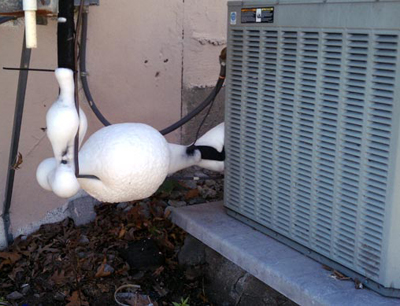Central A/C & Splits System

Air Conditioning Repair, Service & Installation
Let N.J. Affordable HVAC Plumbing & Drain Cleaning be your 1st & only choice for cooling service provider.
NATE certified, trained technicians work days, evenings and weekends for your convenience Carrier authorized dealer Fully stocked service and maintenance vehicles Service all makes & models Service available 24 hours a day, 365 days per year.
WHAT WE CAN DO FOR YOU:
- Install, replace, Repair, and service cooling systems
- Install, replace and service thermostats
- Split System ( Duct-less)
A/C CHECK-UP INCLUDES:
- Calibrate and level thermostat
- Clean filters as needed Monitor volts/amps on fan motor
- Lubricate and inspect bearings for wear
- Clean indoor coil if accessible
- Flush/treat condensate drain with anti-algae
- Inspect condenser coil
- Monitor operating pressure of refrigerant
- Inspect safety devices for proper operation
- Inspect disconnect box for proper rating and installation
- Tighten all electrical connections
- Test/inspect contactors for burned, pitted contacts
- Inspect electrical system for exposed wiring
- Test and inspect capacitors
- Inspect fan blade
- Clean condenser coil and remove debris
- Inspect service valves for proper operation
- Measure temperature difference – supply/return
- Inspect duct work for energy loss
A check-up ensures your equipment is operating safely and is a great way to guard against an unforeseen air conditioning breakdown this summer — when demand for air conditioner service and repair is at its peak. Preventive maintenance also saves money by maximizing efficiency and minimizing costly breakdowns.
A ductless system may be a solution.
Ductless systems are an efficient and cost-effective solution for your home. They are wall units which are slimmer and much more attractive than common window units. More importantly, since it heats and cools, a ductless system is much more proficient in keeping the room at a comfortable temperature. If your home does not already have forced air ducts a ductless system may be the unique solution for central air conditioning for your home. In a ductless system there is usually one outdoor unit serving multiple indoor units mounted throughout the home.
Refrigerant is piped from the outdoor unit through small, insulated refrigerant lines to the individual indoor units. Cool air is blown into the rooms by a fan in the individual units. Since the refrigerant lines are small, installation is generally easier than installation of a full system with new ductwork. Although some systems provide heating and cooling, ductless mini-split systems are usually installed for cooling and are quite efficient. What are the benefits of a ductless system? There are many benefits to a ductless system, including ease of installation due to the small refrigerant piping compared to large air ducts. In addition, ductless split systems allow you to control the temperature individually on each unit for zone control, increasing comfort and efficiency.
Also, the units can be mounted flush on a wall or ceiling and are more aesthetic than a window unit since no windows are blocked. What is involved in the installation of a ductless system? Ductless systems are relatively easy to install. Indoor units are about six to eight inches deep and can be mounted flush on a wall or ceiling, or recessed in a drop ceiling. A three-inch hole behind the unit is used for attaching wiring, refrigerant lines, control cables, and a condensation drain. Wiring for power and controls is easier than with a conventional unit since wires can be run along with the refrigerant lines. Refrigerant lines from outdoor units can span up to one hundred feet to indoor units.
High ceilings will not be a great concern for air conditioning a home because of the way cold air falls due to stratification. In heating, however, your ductless system unit must be powerful enough to allow the warm air to reach the floor and the airflow must be directed downward to ensure that the air reaches the floor before rising again due to stratification.




